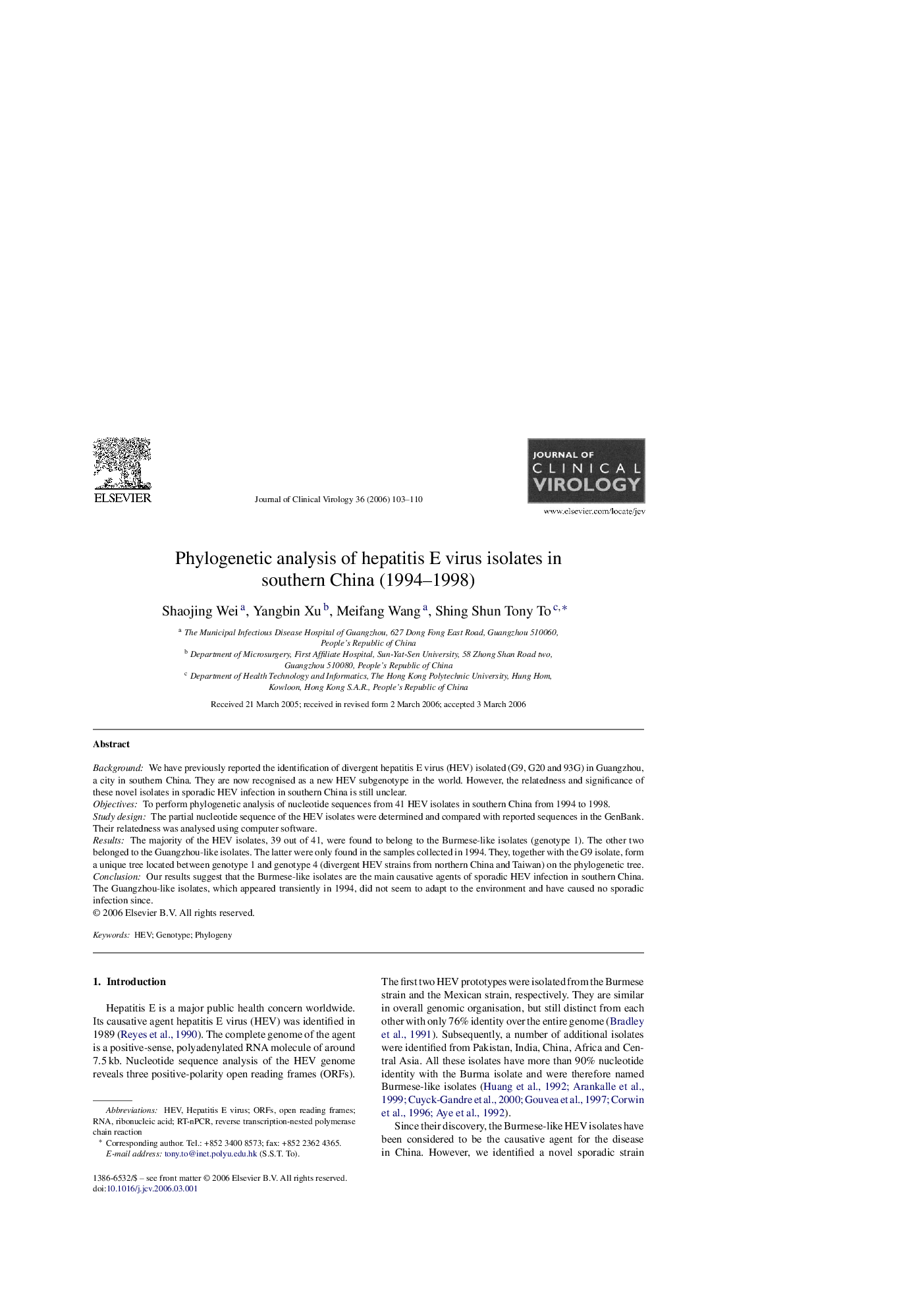| کد مقاله | کد نشریه | سال انتشار | مقاله انگلیسی | نسخه تمام متن |
|---|---|---|---|---|
| 3370845 | 1219092 | 2006 | 8 صفحه PDF | دانلود رایگان |

BackgroundWe have previously reported the identification of divergent hepatitis E virus (HEV) isolated (G9, G20 and 93G) in Guangzhou, a city in southern China. They are now recognised as a new HEV subgenotype in the world. However, the relatedness and significance of these novel isolates in sporadic HEV infection in southern China is still unclear.ObjectivesTo perform phylogenetic analysis of nucleotide sequences from 41 HEV isolates in southern China from 1994 to 1998.Study designThe partial nucleotide sequence of the HEV isolates were determined and compared with reported sequences in the GenBank. Their relatedness was analysed using computer software.ResultsThe majority of the HEV isolates, 39 out of 41, were found to belong to the Burmese-like isolates (genotype 1). The other two belonged to the Guangzhou-like isolates. The latter were only found in the samples collected in 1994. They, together with the G9 isolate, form a unique tree located between genotype 1 and genotype 4 (divergent HEV strains from northern China and Taiwan) on the phylogenetic tree.ConclusionOur results suggest that the Burmese-like isolates are the main causative agents of sporadic HEV infection in southern China. The Guangzhou-like isolates, which appeared transiently in 1994, did not seem to adapt to the environment and have caused no sporadic infection since.
Journal: Journal of Clinical Virology - Volume 36, Issue 2, June 2006, Pages 103–110